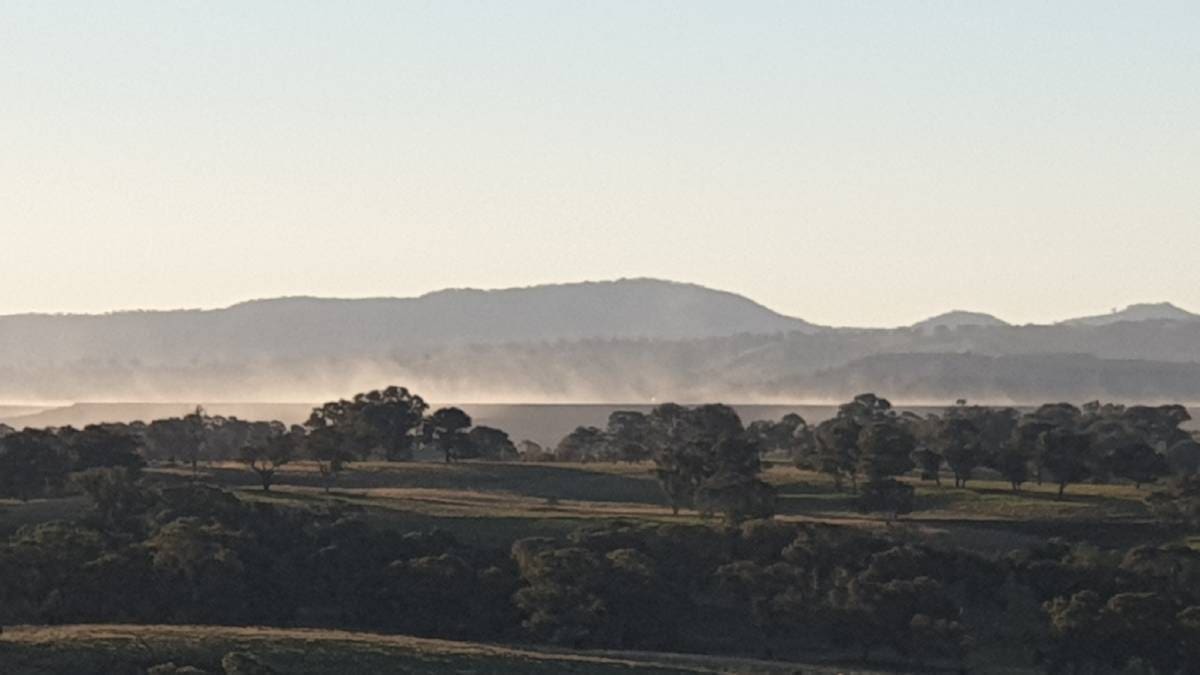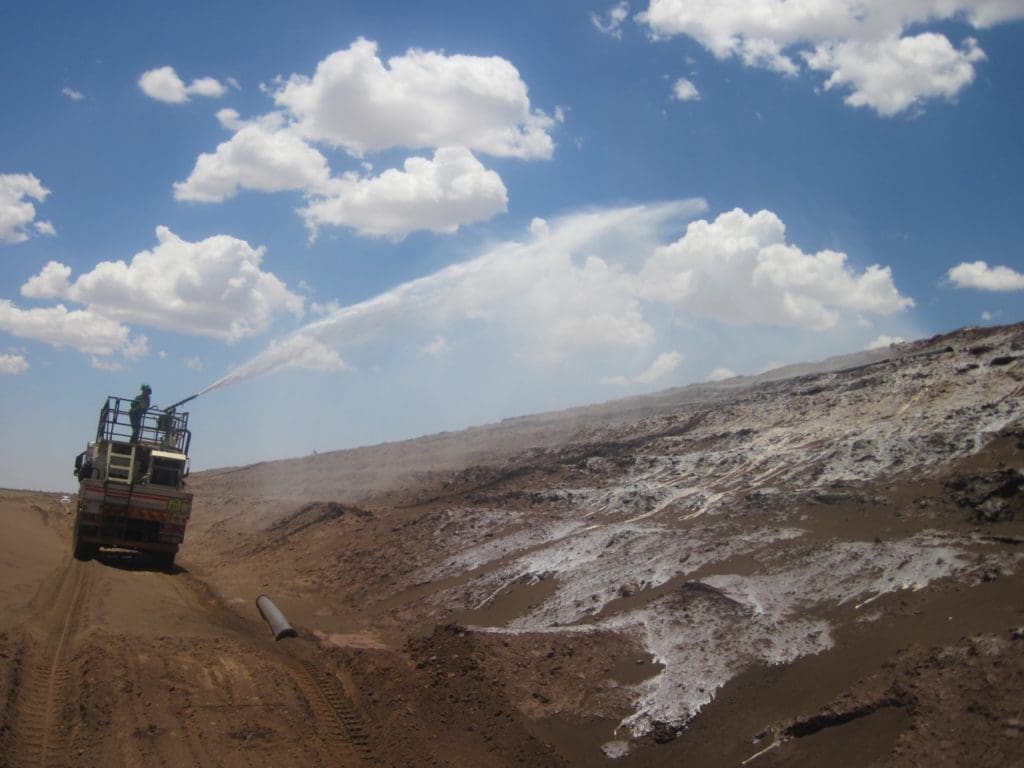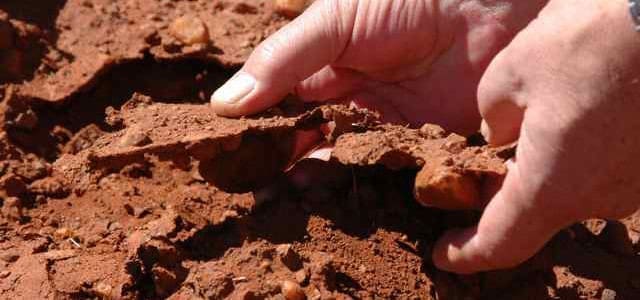
UPRISING: Dust billowing up from the Cadia Tailings Storage Facility in June. Photo: Sally Green.
Early one June morning Errowanbang resident Gem Green stepped outside to admire the sun rising across a landscape that she’s very familiar with.
It was a classic view of a rural landscape. Gold-tinged clouds, silhouetted trees and grass heads shimmering in the sunlight.
What wasn’t normal were the swirls of dust rising off the Cadia Valley Operations tailings dam in the distance.
In response to concerns from residents in close proximity to the tailings dam, CVO released a report by Serinus Health in May this year stating that “there is no current evidence to suggest that dust from the Cadia tailings storage facilities or emissions from the mine ventilation system pose a health risk to the community.”
Since then Cadia has pledged to work proactively with the group on all areas of concern.
However in that same report the mention of secondary minerals in the form of salts raised concerns among members of the recently formed Cadia District Protection Group.
Efflorescent salts, formed on the tailings surface as it dries, are fine-grained and easily windblown: and fine particles with a diameter of 2.5 micrometres or less (PM 2.5) travel long distances and can be inhaled into the lungs.
The group contacted independent expert Dr Dora Pearce on the epidemiological impacts of dust emanating from mine waste who said the presence of efflorescent salts was a serious cause for concern.
“Tailings are what is left at the end of the mining process,” she said.
It’s not just mud. It’s ore that’s been crushed, processed with chemicals added and the ores themselves contain a range of contaminant chemicals in addition to the valuable elements that the mining company is after.
“It’s a chemical soup really.”
Ms Green said that a health impact assessment was absolutely warranted.
The group is also looking at collecting its own dust samples and having them assessed independently.
“Millthorpe is getting some major spikes in particle matter of less than 2.5 and really where else could this be coming from? We need to get on the ground and start collecting samples,” Ms Green said.
It’s a move that is supported by Dr Pearce.
“The only way that they can really do a proper environmental health impact assessment is to know what these people are being exposed to,” she said.
We just don’t know exactly what is in the dust being blown from that mine and that really concerns me.
Dr Pearce wants to see the responsible government regulatory agency utilise the services of the Australian Nuclear Science and technology Organisation at Lucas Heights to determine what’s in the dust.
“They have a protocol for monitoring PM2.5 by collecting the dust on filters and doing a complete analysis of its component parts,” she said.
Cadia general manager Aaron Brannigan said Cadia is committed to working proactively with the group on all areas of their concerns, including environmental monitoring.
“Through this process we will explore and consider a range of air quality monitoring options and we look forward to working with the group to seek their feedback and input into what these options may look like,” he said.
“We value the opinions and concerns of the local community and will continue to consult with the group openly and transparently, as we do with all our stakeholders.
“We encourage anyone with concerns relating to our operations to contact our community concerns hotline on 1800 063 043.”
According to Mr Brannigan Cadia has been in direct communication with the Cadia District Protection Group in the lead up to the election of their committee, and will soon commence a formal consultation process following the recent appointment of their committee members.
![]()













